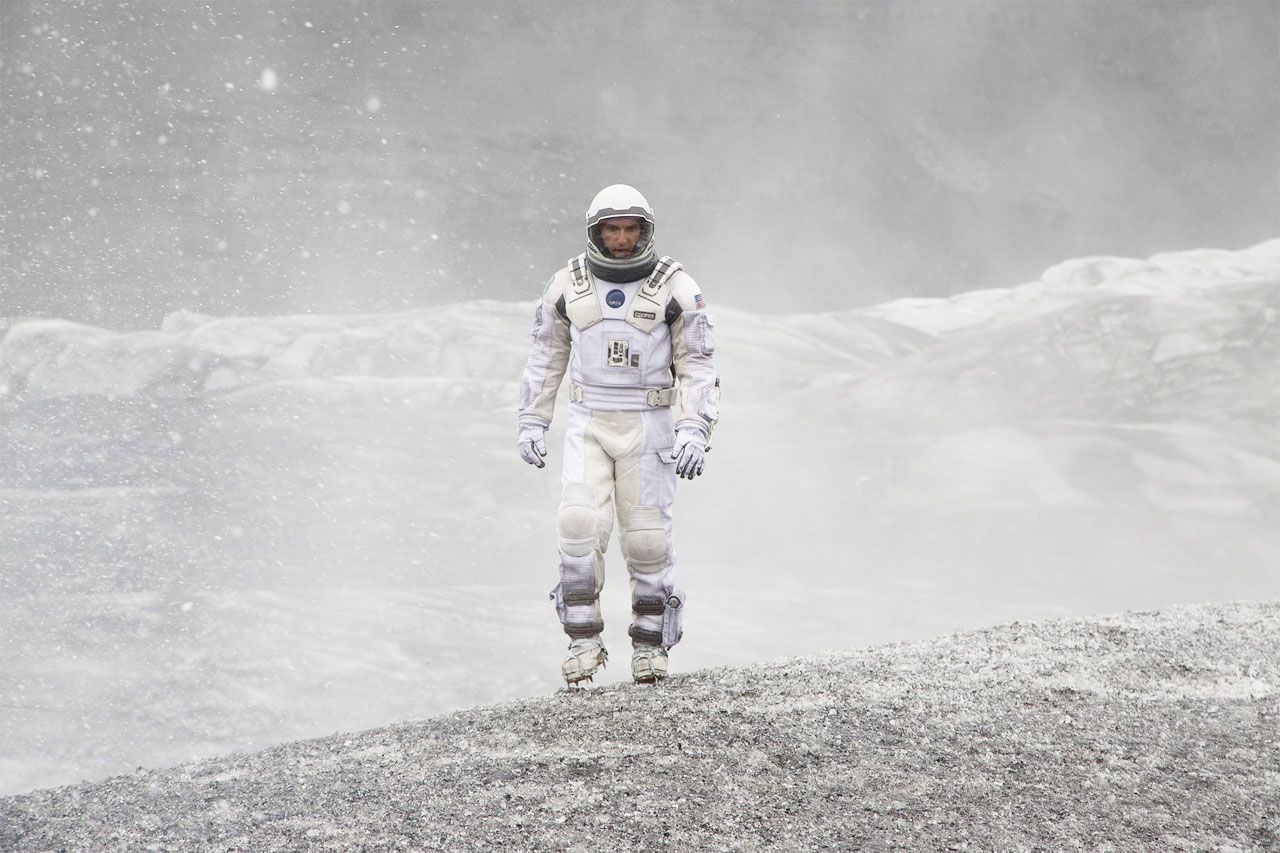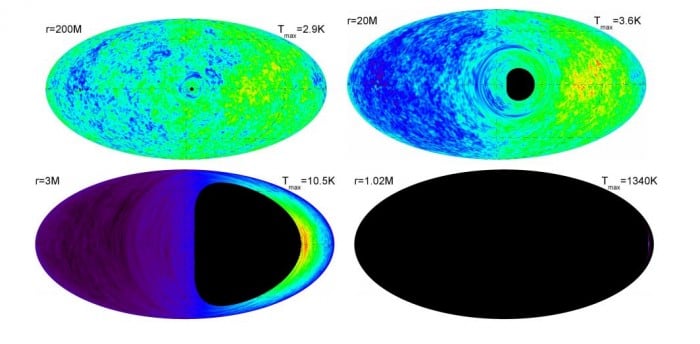Could a habitable planet orbit a supermassive black hole?

Interstellar holds a special place for science fiction fans. The film’s executive producer and scientific advisor was Kip Thorne, a Nobel Prize–winning physicist who vowed that nothing in the film would violate the laws of physics and that any wild speculation would stem from science.
The movie’s premise is that Earth is becoming uninhabitable and humans must find some other place to live. As luck would have it, astronomers have discovered a wormhole near Saturn that acts as a tunnel through spacetime to a distant supermassive black hole called Gargantuan.
Various planets orbit Gargantuan. So NASA sends a number of missions to survey the planets in the hope of finding one that is habitable.
Much has been written about the scientific accuracy of the film, its depiction of black holes, and so on, most of it full of praise. The physicist Michio Kaku said it was the gold standard by which future science fiction films will be judged.
But one question has yet to be addressed—is it possible for a habitable planet to orbit a supermassive black hole at all? And today, we get an answer thanks to the work of Jeremy Schnittman at the NASA Goddard Space Flight Center in Greenbelt, Maryland.
Schnittmann has taken a light-hearted look at the question and calculated whether conditions ripe for life could exist on a planet orbiting close to a supermassive black hole. And his conclusions are surprising.
First some background. Astrobiologists have long argued about the conditions necessary for life of the Earth-like variety. There is broad agreement that the presence of liquid water is one of the fundamental requirements, and this sets specific limits on the temperature of habitable planets.
Schnittman’s approach is to ask what kind of energy sources could generate these kinds of temperatures on a planet orbiting a black hole. Such an energy source would have to be entirely different from Earth’s.
The atmospheric temperature here is the result of the balance between incoming energy from the sun, which heats the atmosphere, and the outgoing energy that takes energy away. This turns out to be a complex relationship that has spawned an entire discipline of its own in the form of climate science.
Nevertheless, without a sun, the incoming light would vanish, removing almost all the energy for life on Earth. “Without its constant heat flux, the oceans would likely freeze over in a matter of days,” says Schnittman.
But it turns out that there are a number of other energy sources for a planet orbiting a supermassive black hole. The most obvious is that supermassive black holes aren’t black at all. ”Most of what we know about black holes comes from observing the electromagnetic radiation coming from gas as it accretes onto the black hole,” says Schnittman. “One could naturally imagine that replacing the sun with an accreting black hole might not be the end of life on Earth after all.”
But supermassive black holes aren’t just bright; they are the brightest persistent sources of radiation in the universe, particularly in the ultraviolet region where the radiation peaks. They are surrounded by a hot accretion disc of gas that is falling into the black hole.
The conditions in such a disc are just too extreme to support liquid water, but Schnittman says they can be made more comfortable by imagining that the accretion rate of the black hole is a tiny fraction of the observed value.
The result is that any planet orbiting close to a supermassive black hole would do so in a cloud of hot gas. In the film, the planets of interest orbit just beyond the black hole’s event horizon, where Schnittman calculates they would be surrounded by a 6,000-degree black-body radiation field. “Hardly hospitable to life,” he comments.
Further out, the gas would be cooler. For it to be room temperature, the planet would have to orbit at distance that is 100 times the gravitational radius of the black hole.

So on the face of it, liquid water would be possible on such a planet. Whether life could evolve is trickier to assess. “All known life forms require an energy gradient in order to survive, so an all-pervasive black-body radiation background would probably not be very conducive to complex life,” says Schnittman.
There is a small problem with the film in that the planet clearly orbits beyond the accretion disc, which Schnittman says would be dynamically unstable.
A bigger problem is that if the accretion rate were lower, the density of the disc would also be lower, making it more difficult to radiate. And without this radiation, the accretion disc would just heat up beyond the temperature of liquid water. So there is a paradox at the heart of this argument that ultimately invalidates it.
All is not lost, however. There is another source of energy in the form of cosmic microwave background, the echo of the Big Bang. Astronomers have measured this radiation, and it has a temperature of just 2.7 K, hardly enough to sustain liquid water.
But this is where the magic of relativity comes into play. As becomes apparent in the film, time slows down for observers on the surface of the planet, and this has the effect of blue-shifting light, making it hotter. And the closer the planet is to the black hole, the bigger this effect will be.
Schnittman calculates that a planet orbiting just beyond the gravitational radius would experience enough heating from the cosmic microwave background to do the trick. “This would be like orbiting a white dwarf at a distance of 0.2 AU,” he says. That would provide enough energy for liquid water, but would also bathe the planet in dangerous levels of ultraviolet.
Then there is the light from other stars. On Earth, the night sky is dark because we sit in a relatively sparse arm of the galaxy. But supermassive black holes generally sit at the center of galaxies, where the density of stars is significantly higher. So for a planet orbiting the supermassive black hole at the center of our galaxy, the night sky would be 100,000 times brighter than on Earth.
That would provide a significant background of UV light and x-rays. Schnittman imagines a civilization that is sufficiently advanced to construct a sort of “reverse Dyson sphere” that reflects this energy. “This would allow habitability much closer to the host supermassive black hole, even in the face of overwhelming background UV or x-ray radiation,” he says, hopefully.
“Yet even with such a protective shield, there is still the spectre of nature’s silent killer: neutrinos,” he says with an increasing sense of misery. Neutrinos do not interact strongly with matter. But when there are huge numbers of them, they can have a significant impact.
Some scientists think that mass extinction events on Earth were caused by huge neutrino bursts from nearby supernovas. And a supermassive black hole would create more than enough to dampen the party spirit on any planet.
However, neutrinos could lead to geothermal heating. “And unlike the harmful UV or x-ray flux from this blue-shifted electromagnetic radiation, neutrino heating of the planet’s core could lead to a thriving population of lifeforms similar to those found near deep ocean vents on Earth,” says Schnittman, with more than a hint of wishful thinking.
This sense is quickly lost as he moves on to other reasons to be pessimistic. Near a black hole, gravitational waves would provide a steady hum of destructive vibrations. And dark matter, should it exist, provides a rich tapestry of doom.
Schnittman is careful not to entirely dismiss the possibility that a habitable planet might orbit a supermassive black hole, at least not explicitly.
But the implicit message is clear—there is little hospitality there. If there is anywhere in the universe that humans should look for habitable planets, it is probably as far as possible from supermassive back holes.
Fans of Interstellar, please note!
Ref: arxiv.org/abs/1910.00940 : Life on Miller’s Planet: The Habitable Zone Around Supermassive Black Holes
Deep Dive
Space
How to safely watch and photograph the total solar eclipse
The solar eclipse this Monday, April 8, will be visible to millions. Here’s how to make the most of your experience.
How scientists are using quantum squeezing to push the limits of their sensors
Fuzziness may rule the quantum realm, but it can be manipulated to our advantage.
The great commercial takeover of low Earth orbit
Axiom Space and other companies are betting they can build private structures to replace the International Space Station.
Stay connected
Get the latest updates from
MIT Technology Review
Discover special offers, top stories, upcoming events, and more.